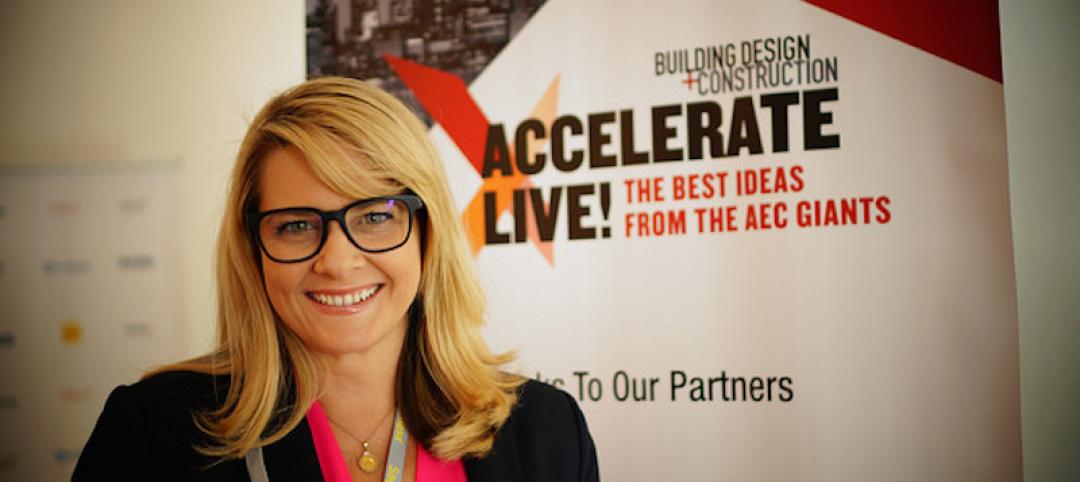Traveling abroad to speak with professionals who are pushing the bounds of what’s possible in construction today is definitely a job perk. In doing so, I get to see firsthand how similar our struggles to modernize are. Looking beyond today’s constraints to the possibility of what “could be” is a key characteristic of those defining and delivering innovation to design and building firms across the globe. But in our search for the next big thing, are we rushing past key innovations that could be the bridge between the current and future state of the industry?
During a recent trip to London, I attended Digital Construction Week. A first of its kind, the UK event series focused on digital construction, engineering, design, manufacturing and operation. I was impressed by the gathering—there was a palpable buzz in the air as innovators from the tech world, government and industry shared insights, explored possibilities and generally geeked out.
I was there in support of Bluebeam, which had a booth at the event, although my primary objective was to speak with as many innovators as possible to get a pulse on how ready the UK construction market is to adopt technology and raise the bar on project delivery. With a keen eye on productivity, I was seeking feedback specifically on how they are leveraging tech to become compliant with Level 2 BIM, a requirement laid out by the UK government back in April 2016.
As I sat in sessions, talked with tech providers and networked with attendees, I was pleasantly surprised at how “practical” the conversations were. Sure, there was lots of talk about BIM, drones, AR/VR and robotic builders—but the conversations were unusually grounded for a tech conference. One thing that was noticeably different was the focus on “digitalization” rather than BIM. I think this is a key part of why the conference felt grounded. For one thing, there were no arguments over 2D versus 3D, or models versus data. Rather, much of the conversations focused on how to solve real problems like connectivity, reducing rework, increasing productivity, collaborating more effectively and re-examining how public and private enterprise can work together to solve the skills gap challenge.
On a couple occasions I was called back to the booth to lend a helping hand as the flow of traffic in between sessions created a tsunami of curious attendees. In my conversations in the booth, many of the questions attendees asked were similarly grounded in the reality of their day-to-day work (e.g. “How will this technology help me solve our daily challenges?”). As I talked them through the workflow applications, a recurring comment was made: “This is something we can use now…it’s not something we have to wait for in the future.” Each time, it was said with equal parts relief and enthusiasm. Hearing this over and over again, the comment really stuck with me.
Providing practical solutions that reduce redundancy, improve accuracy and increase productivity proves what’s possible today and, in turn, builds the case for further digitalizing the workflow of tomorrow.
Nearly every other industry across the globe has recognized the move toward digitalization. Construction is one of the last industries to embrace technology. And perhaps part of the reason for the lag in innovation is the fact that we talk more about unproven potential solutions rather than measuring the gains of existing innovations.
BaseStone CEO Alex Siljanovski spoke with me about this conundrum at the conference. With the shared mission of improving productivity in construction, we agreed that oftentimes our industry focuses too much on the future state of innovation without acknowledging the foundational need for base level transformation. Of course, we both see the value of developing technology with the pragmatic end user in mind, but we wonder if, in our haste to report on future possibilities, we miss the opportunity to start by redefining the way we work today.
Alex and his team went around the show floor asking a few attendees, myself included, the question, “How do we improve productivity in Construction?” They later produced a short video from the responses. It was great to see how many individuals shared the same mindset: focus on the innovations of today rather than the indefinite promise of tomorrow.
As someone who is always looking toward the future state of our industry, working with some of the premier innovators of our time, I sometimes forget how valuable these incremental steps toward digitalization are. Those tasked with the pragmatic implementation of changing the way we design and build today are at the forefront of defining how successful we, as an industry, will be at making the leap toward tomorrow.
More from Author
Sasha Reed | Sep 19, 2017
BIM vs VDC…how the US and the UK differ in approaching digital project delivery
In this four-part series, Bluebeam VP Sasha Reed sat down with industry experts to examine the need for defining and understanding digital workflows and data management throughout the design and construction project lifecycle.
Sasha Reed | Jul 19, 2017
Introducing StrXur by Bluebeam
Our goal is to present unique perspectives you may not be able to find anywhere else.
Sasha Reed | Jul 13, 2017
Defining the future by mastering the art of change
From my perspective, what separates organizations thriving in the digital revolution from those who are not boils down to one thing: leadership.
Sasha Reed | Mar 15, 2017
Incentivizing change: Show me the money
Who is succeeding, and on what terms? And what will it take for everyone to experience the benefits of that success?
Sasha Reed | Oct 4, 2016
The talent shortage: Will the training the AEC industry desperately needs arrive in time?
As the construction industry bounces back from the Great Recession, an entirely new class of tech-savvy construction professionals has been created, and the supply of these highly skilled, tech-proficient pros has been quickly exhausted.
Sasha Reed | Jul 11, 2016
Construction Disruption at AECX: Technology, hackathons and the promise of change in LA
The lead up to AECX featured a discussion providing insight into the current state of the AEC technological revolution by exploring opportunities, challenges and choices AEC pros face.
Sasha Reed | Jun 23, 2016
Implementing Change: The Five Biggest Mistakes to Avoid
Two truths from the jobsite: 1) The best part about uncovering a problem is discovering its solution, and 2) The worst part about discovering the solution is implementing it.
Sasha Reed | Jun 9, 2016
With all these sharks in the water… (No Predictions Here...Part 2)
Rather than fighting to control the proliferation of apps, perhaps we should be training our eyes to look for signs of long-term viability among all the fins in the water
Sasha Reed | Dec 17, 2015
How is the Value of VDC for Design Management Translating Outside the US?
Sascha Vesterlund, a VDC Specialist, Design Processer with MT Højgaard, and Nathan Wood, Innovation at DPR Construction, shared their perspectives on VDC















